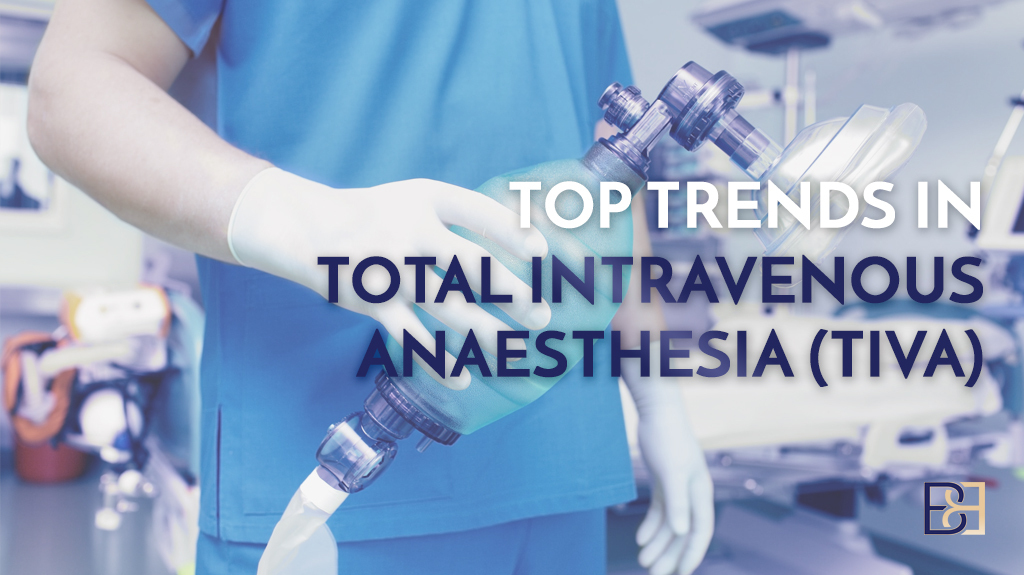Anaesthesia is crucial for pain-free surgeries. It blocks pain signals to your brain, allowing complex procedures without discomfort. This article explains the types of anaesthesia, their uses, and what to expect during and after administration.
Key Takeaways
- General anaesthesia is the most commonly used type for abdominoplasty surgeries, providing complete unconsciousness and pain elimination.
- Thorough preparation, including medical assessment and lifestyle adjustments, is crucial for a positive anaesthesia experience and recovery.
- Dr Beldholm uses a certified and experienced anaesthetist to ensure effective monitoring and management during the surgical procedure.
Types of Anaesthesia Used in Abdominoplasty Surgery

Book your appointment online now
Anaesthesia plays a pivotal role in abdominoplasty surgeries, ensuring that patients remain comfortable and pain-free throughout the procedure. The most common type of anaesthesia used for tummy tucks (Abdominoplasty) is general anaesthesia. This method renders the patient completely unconscious, eliminating any sensation or awareness of the surgical procedure. General anesthesia is particularly favoured for its ability to allow surgeons to perform more intricate procedures by inducing a state of deep unconsciousness in patients.
Less invasive tummy tuck (Abdominoplasty) cosmetic procedures sometimes use local anaesthesia. Local anaesthesia involves numbing a small section of the body, allowing the patient to remain awake during the process. This type of anesthesia is typically administered through injections or topical applications and is less commonly used in tummy tuck (Abdominoplasty) surgeries. It is not a common method to perform a complete abdominoplasty. However, Dr. Beldholm uses local anaesthesia to provide pain relief during the recovery period of your surgery.
Another option is regional anaesthesia, which involves injecting anaesthetic near a cluster of nerves to numb a larger area of the body. This can include methods like epidurals, which are often used to numb the abdominal muscles. Regional anaesthesia provides a middle ground between local and general anaesthesia, offering extensive numbness while keeping the patient alert.
IV sedation combined with local anesthesia offers an alternative to general anesthesia. This method allows patients to remain awake but comfortable during less invasive procedures, offering a balance of consciousness and pain relief.
How Anaesthesia Works
Understanding how anesthesia works can demystify the process and alleviate some pre-surgery jitters. At its core, anaesthesia prevents pain signals from reaching the brain, effectively blocking sensations of discomfort during surgical procedures. This process involves the nervous system, which includes the brain, spinal cord, and nerves, to manage sensations and ensure a pain-free experience during surgery.
The administration method of anaesthesia varies depending on the type used. Here are the main types of anesthesia and their administration methods:
- General Anaesthesia: Delivered through intravenous means or inhaled, rendering the patient completely unconscious.
- Regional Anaesthesia: Targets specific nerve clusters to numb particular areas of the body.
- Local Anaesthesia: Designed for smaller, localised procedures and is typically administered via injections or topical applications.
Each type of anaesthesia, whether it be general, regional, or local, serves a specific purpose based on the complexity and needs of the surgical procedure. Understanding these mechanisms helps patients appreciate the role of anesthesia during surgery.
Preparing for Anaesthesia
Preparation is crucial to ensure a smooth anesthesia experience and successful abdominoplasty surgery. A complete medical assessment, including lab tests, is necessary to confirm the patient’s fitness for surgery. Providing a complete medical history is equally important as it helps the anaesthetist tailor the anaesthesia plan to the patient’s specific needs. Dr. Beldholm will review all of your history before the surgery and, if needed, arrange for an anaesthetic consultation prior to the surgery.
Patients should avoid specific vitamins and supplements, like Vitamin E and omega-3 fatty acids, which may increase the risk of bleeding. Discussing all current medications and supplements with healthcare providers is essential to avoid any adverse interactions with anaesthetic drugs.
Patients are advised to stop smoking at least six weeks before and six weeks after the surgery, as smoking can significantly impact the healing process. In addition, fasting from midnight the night before the surgery is typically required to reduce anesthesia complications. You will receive a call from Maitland Private Hospital the day before the surgery to provide you with fasting instructions.
Mental preparation is also key. Setting realistic expectations and understanding the recovery process can help patients approach cosmetic surgery with a positive mindset. Being well-prepared, both physically and mentally, can make a significant difference in the overall experience and outcome of the tummy tuck (Abdominoplasty) procedure.
What Happens During Anaesthesia Administration

During the abdominoplasty surgery, the administration of anaesthesia is a meticulously monitored process. The anaesthetist continuously monitors vital signs, including heart rate and blood pressure, using advanced equipment throughout the operation. This monitoring also includes checking oxygen levels and body temperature to maintain optimal conditions during surgery.
The administration of anaesthesia is adjusted as needed throughout the procedure to keep the patient asleep and comfortable. Anaesthetists utilise sophisticated devices to monitor the depth of anaesthesia, reducing the likelihood of the patient waking during the operation. This continuous adjustment ensures that the patient remains in a stable and pain-free state.
General anaesthesia, often required for complex surgeries like abdominoplasty, necessitates such rigorous monitoring to manage the patient’s unconscious state and vital functions effectively. This careful oversight is critical to the success of the surgery and the security of the patient.
Dr. Beldholm’s anaesthetist prefers TIVA anaesthesia. Check out our separate article on this: “Top Trends in Total Intravenous Anaesthesia (TIVA)”
Post-Surgery Recovery from Anaesthesia
The immediate aftermath of abdominoplasty surgery can be challenging, but understanding what to expect can help ease the recovery process. Common side effects include bruising, swelling, pain, fatigue, and nausea. Patients may feel tired and disoriented as the effects of anaesthesia wear off.
Pain management is a crucial aspect of recovery. Pain relievers should be taken as directed by the healthcare provider to ensure comfort and facilitate healing. Additionally, a fiber-rich diet can help mitigate common post-surgery issues like constipation.
Arranging for someone to drive you home post-surgery is essential, as anaesthesia can impair your ability to drive. Most patients can typically return to light work within 1 to 3 weeks after the procedure, but it’s essential to follow the surgeon’s recommendations and avoid putting strain on the surgical wounds for at least six weeks.
To prevent blood clots, which are a significant risk post-surgery, patients should walk around periodically and take any prescribed anticoagulants. Adhering to these precautions and attending follow-up appointments will help ensure a smooth recovery and a positive outcome from the tummy tuck (Abdominoplasty) surgery.
Risks and Complications Associated with Anaesthesia
While anaesthesia is generally lopw risk, there are some potential complications that patients should be aware of. Older patients face a higher risk of complications due to reduced organ function and age-related health issues. Similarly, patients with obesity and other medical conditions have distinct risks and challenges associated with anaesthesia during surgeries.
Deep vein thrombosis (DVT) and pulmonary embolism (PE) are significant risks in patients undergoing abdominoplasty. These conditions can be life-threatening, which is why it’s crucial for patients to discuss these risks with their healthcare providers and follow all post-surgery care instructions to mitigate these dangers.
Open communication with healthcare providers about the potential risks and complications associated with anaesthesia is essential. Being well-informed and taking preventive measures significantly reduces the likelihood of adverse outcomes, ensuring a positive surgical experience.
Dr Beldholm’s Final Thoughts
In summary, understanding the role of anaesthesia in abdominoplasty surgery is crucial for anyone considering this procedure. From the different types of anaesthesia used to how they work, preparing for anaesthesia, the administration process, and post-surgery recovery, each aspect plays a vital role in ensuring a smooth and complication-free surgery.
Ultimately, choosing the right specialist surgeon and being aware of the potential risks and complications are key. With this comprehensive guide, you are now well-equipped to approach your abdominoplasty surgery with security, knowing that you’ve made informed decisions every step of the way.
Frequently Asked Questions
What types of anaesthesia are used in abdominoplasty surgery?
General anaesthesia is typically utilised for abdominoplasty surgery, as it ensures complete unconsciousness. Local and regional anaesthesia may be considered for less invasive procedures.
How should I prepare for anaesthesia before my abdominoplasty?
To prepare for anaesthesia before your abdominoplasty, ensure you undergo a thorough medical assessment, avoid specific vitamins and supplements, disclose all medications, stop smoking at least one month prior, and fast from midnight the night before your procedure. Following these guidelines will help ensure a positive and risk-free surgical experience.
What happens during anaesthesia administration for an abdominoplasty?
During anaesthesia administration for an abdominoplasty, the anaesthetist monitors vital signs and adjusts anaesthesia levels to ensure the patient remains unconscious and pain-free throughout the procedure.
What are the risks associated with anaesthesia in abdominoplasty?
Anaesthesia for abdominoplasty surgery poses risks such as complications in older patients, those with obesity, and the potential for deep vein thrombosis and pulmonary embolism. It is essential to discuss these risks with your healthcare provider for informed decision-making.
How do I choose the right anaesthetist for my abdominoplasty surgery?
To choose the right anaesthetist for your tummy tuck (Abdominoplasty) surgery, ensure they are certified and possess significant experience in managing anesthesia for surgical procedures. A thorough review of their track record will help you determine their capability to handle the complexities involved.



